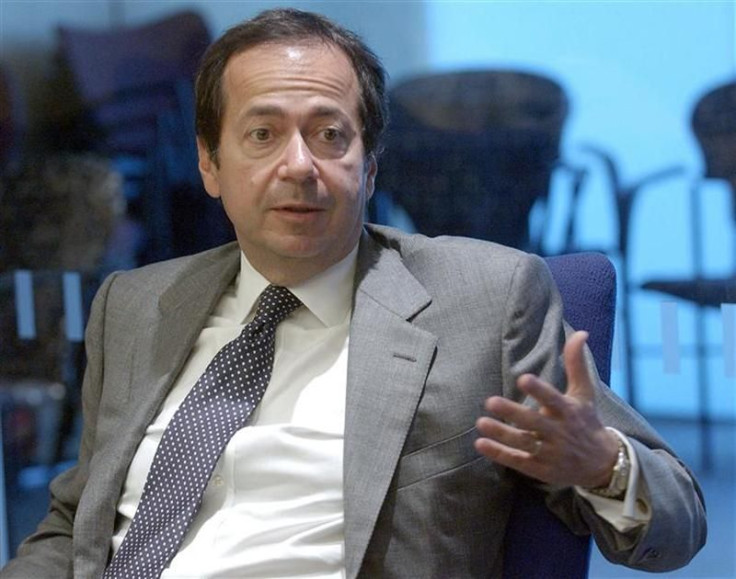Paulson's Advantage Plus Fund Cut in Half in 2011

(Reuters) - Hedge fund manager John Paulson lost more than half of the capital in one of his firm's biggest funds, people familiar with the number said Friday.
His Advantage Plus fund, which was the firm's worst performer through 2011, ended the year down roughly 52 percent. In 2010 that portfolio ended up 17 percent.
The Advantage Fund, which is the unlevered version of the Advantage Plus Fund, dropped 36 percent after an 11 percent gain in 2010.
"This will certainly go down as one of the largest losses in terms of dollars and percent in the history of hedge funds," said Bradley Alford, chief investment officer at Alpha Capital Management, which invests client money with Paulson. "When you see John Paulson cut you in half in a matter of months, after 17 years of stellar performance, you have to wonder the risk that hedge funds take to attempt to stand out in crowd of 10,000+ others."
Paulson's other offerings didn't fare much better. His Credit Opportunities fund lost 18 percent in 2011. Even Paulson's Recovery Fund, a relatively small portfolio which had fared well during the early part of the year, slumped 28 percent, another person familiar with the Paulson numbers said.
A spokesman for Paulson's firm, Paulson & Co, declined to comment on the fund's performance.
Paulson is one of the biggest stars of the $2 trillion dollar hedge fund industry, having made his fame on prescient bets on the subprime mortgage crisis and, more recently, gold.
But 2011 was not kind to the billionaire stockpicker, who bet big on a U.S. economic recovery that never arrived. As the U.S. economy stagnated, the sovereign debt crisis in Europe sent global financial markets into a tailspin in the second half of the year. The Standard and Poor's 500 stock index ended 2011 flat.
A STEEP FALL
Paulson began sounding an apologetic note with investors about the heavy losses during the summer when he told them that he would be curbing some of his big holdings in financial stocks and other bad bets. Since then he has repeatedly told investors that year was an "aberration" and that he is committed to putting his funds into the black again.
Paulson had generated much buzz in the industry for his strong returns over the years, which allowed him to claim a record payout of $5 billion for his returns in 2010.
However, his funds sustained significant losses last year on investments in Bank of America (BAC.N), Hewlett Packard (HPQ.N), Hartford Financial Services (HIG.N) and Sino-Forest (TRE.TO).
Even gold, which had contributed to stellar returns for Paulson & Co investors in previous years, did not offset losses, as the once safe-haven commodity sank further through 2011. At the end of the third quarter, Paulson was the largest shareholder of the SPDR Gold Trust (GLD.P) exchange-traded fund with about 20 million shares, according to quarterly regulatory filing.
The average hedge fund was down about 4.5 percent for the year, according to eVestment/HFN, which tracks the performance of about 4,000 funds through its HFN Hedge Fund Aggregate Index. That figure may drift lower as more funds report their final performance, eVestment said.
While the year was horrible for Paulson, it was not uniformly terrible for the industry.
Kenneth Griffin, who runs hedge fund firm Citadel and has had his share of heavy losses during the financial crisis, boasted double-digit returns this year with his Kensington and Wellington funds gaining 20.4 percent, a person familiar with the performance said. Citadel's $1.5 billion tactical fund surged 37.7 percent and the $2.0 billion global equities fund gained 21.4 percent.
(Reporting by Katya Wachtel; Editing by Svea Herbst-Bayliss, Gary Hill and Richard Chang)
© Copyright Thomson Reuters 2024. All rights reserved.





















